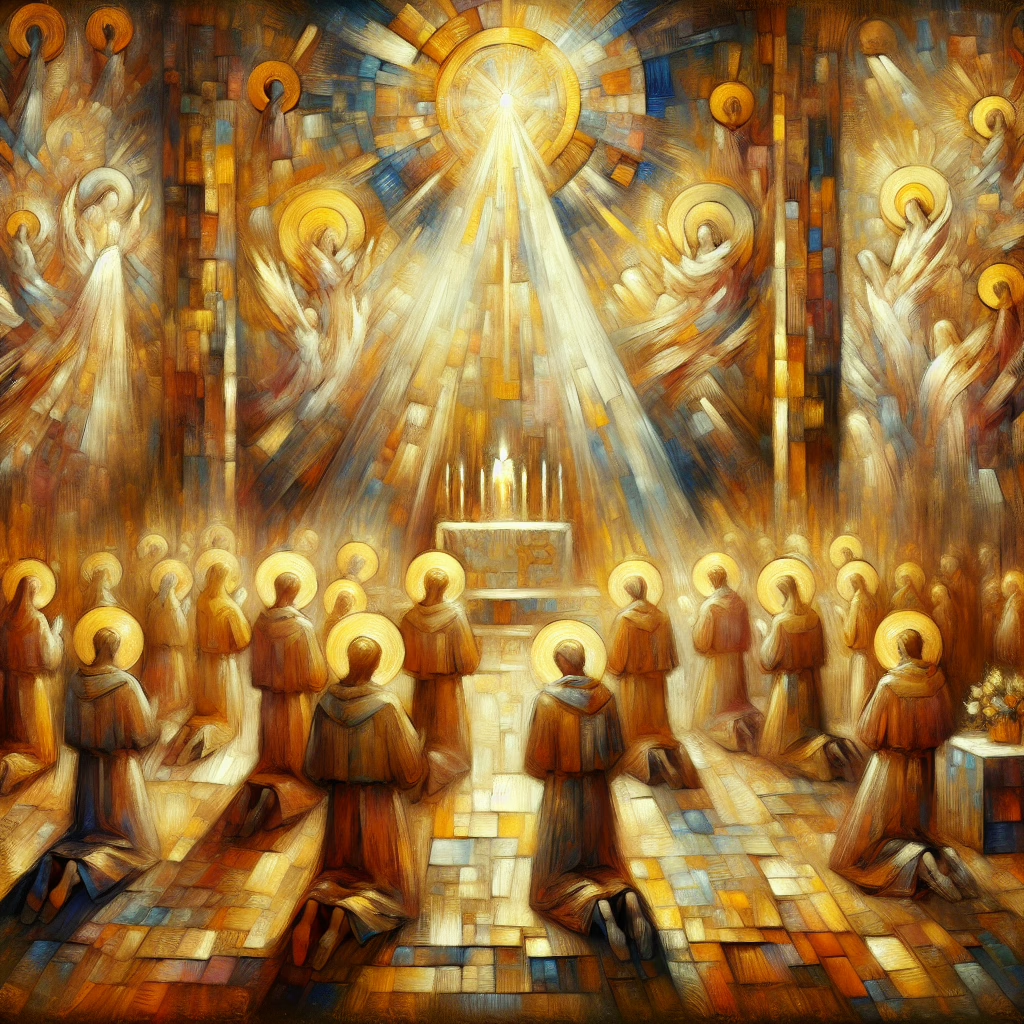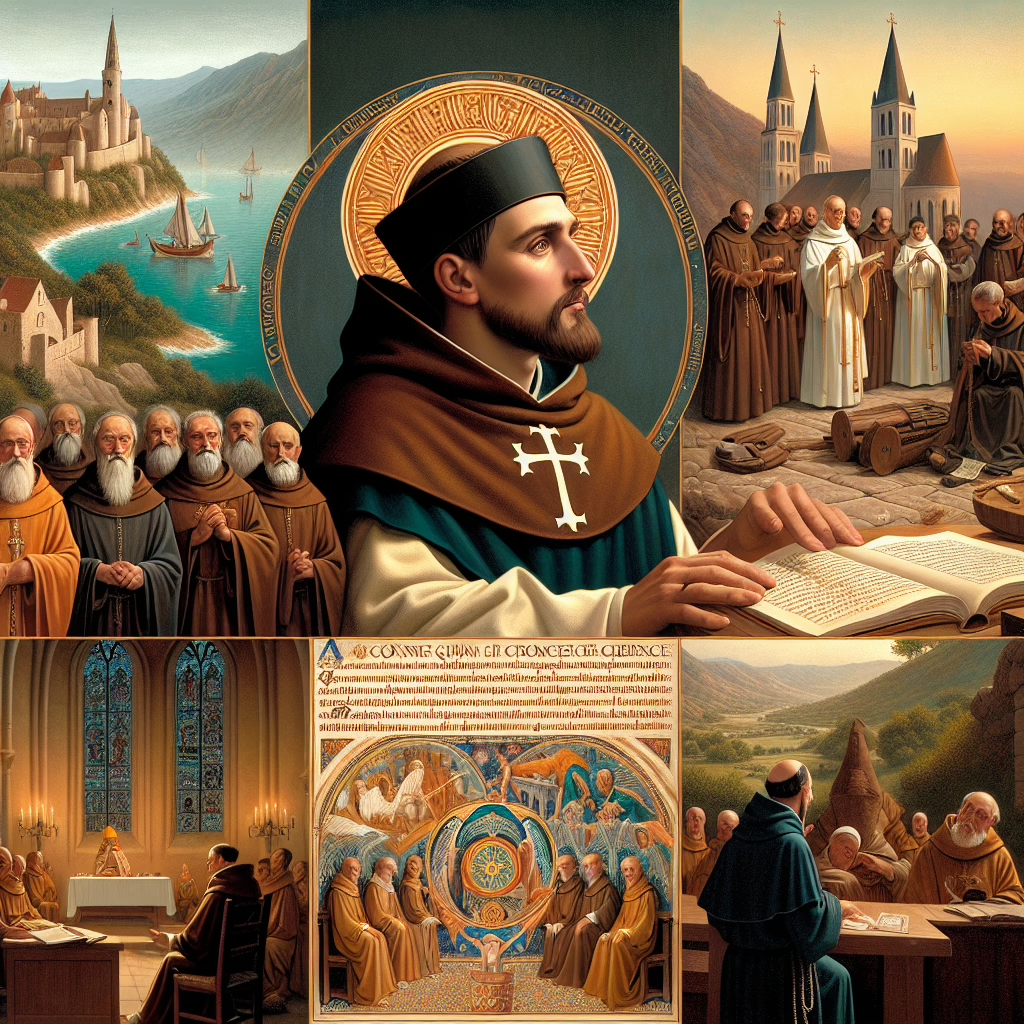Discovering St. Scholastica: The Patron Saint of Nuns and Education
Introduction: The Life and Legacy of St. Scholastica
In the words of St. Scholastica herself, "Let us love, since that our hearts worship the God who dwells among us." This profound love not only defined her life but also profoundly impacted monastic life and education. As the twin sister of St. Benedict and the founder of the female Benedictine community, St. Scholastica's role in the Catholic Church cannot be overstated. Known as "St. Scholastica, Virgin," she is revered for her unwavering commitment to her faith and her pioneering work in establishing a monastic tradition for women. This blog post explores the key aspects of her life, teachings, and lasting influence.
1. Early Life and Spiritual Vocation
1.1 Roots in Nursia
St. Scholastica was born around 480 AD in Nursia, Italy, into a devout Christian family wealthy in both material goods and spiritual teachings. It was in this nurturing environment that the seeds of her vocation were sown. Her early years, filled with the teachings of her faith-filled family, ignited the fervent spiritual path she would follow all her life. St. Scholastica, rooted in the values of her upbringing, became a beacon of devout Christian living.
1.2 Journey to Monastic Life
At the tender age of twelve, Scholastica and her brother Benedict traveled to Rome. The city, with its dissolute lifestyle, was a far cry from the values they held dear. This pivotal experience fortified her resolve to pursue a life of spiritual dedication. She journeyed with her brother to Subiaco, where they deepened their bond and shared spiritual insights. These moments were steps toward her eventual arrival at Montecassino, where she would become a central figure in women's monastic communities.
1.3 Founding the Monastery
St. Scholastica's foundational work began with the establishment of a women’s monastery near Montecassino. As the first Benedictine nun, she was not just a follower; she was a leader. Her work marked a significant turning point for women's role in the Church, providing a place of religious contemplation and community. Her establishment of a monastic order for women was not only a personal triumph but also a monumental step in the Church’s history, bringing about a new era for women's spiritual communities.
2. Spiritual Teachings and Values
2.1 Key Values of the Benedictine Tradition
Central to St. Scholastica's teaching was the Benedictine principle of "ora et labora" or "pray and work." This guiding philosophy was not merely an edict but a lived reality in her life. Her unwavering commitment to prayer and service set a precedent for religious communities, exemplified by her dedication to leading by example in prayer and labor.
2.2 Annual Meetings with St. Benedict
The spiritual bond between Scholastica and Benedict was deepened through their annual meetings, which were more than familial gatherings—they were profound spiritual unions. These interactions emphasized the significance of spiritual companionship as a means of enriching one's faith journey. These meetings showcase the power of spiritual friendships, a practice that Pope John Paul II highlighted: "In spiritual friendship, you find encouragement and enrichment."
2.3 Lessons on Balancing Tradition and Compassion
St. Scholastica taught the delicate balance between monastic tradition and compassion through her actions and miracles. Her miraculous interventions illustrate a flexible heart that balances adherence to spiritual rules with loving kindness. Her life teaches us the importance of adapting tradition with love, a lesson reflected in her storied interactions with her brother Benedict.
3. Miracles Associated with St. Scholastica
3.1 The Storm Miracle
Perhaps the most renowned miracle associated with St. Scholastica is the storm that arose, allowing St. Benedict to stay with her longer than planned. Her prayer was answered by God with a display of divine intervention that cemented her deep faith in prayer’s power. This miracle is a testament to her influence and faith, showcasing the divine impact one can effect through dedicated supplication.
3.2 The Vision of Her Ascension
Following her death, St. Benedict was blessed with a vision of Scholastica’s soul ascending to heaven in the form of a white dove—a beautiful symbol of resurrection and divine favor. This vision granted comfort and assurance of her sanctified life and inspired many with the hope of eternal life promised in Catholic teachings.
3.3 Broader Impact of Her Miracles
The miracles attributed to St. Scholastica continue to inspire devotion across the world. They remind us of the enduring power of faith and community, inviting individuals today to embrace her devotion and love for God. Her example encourages us to integrate these values into modern living, embodying faith through both private contemplation and community service.
4. Spiritual Practices Inspired by St. Scholastica
4.1 Traditional Practices of Devotion
St. Scholastica's life informs a host of devotional practices—prayer, meditation, and silence stand central. Her example inspires us to engage in contemplative prayer, dedicating moments of silence to contemplate the divine. Followers might include specific prayers to St. Scholastica to seek her intercession in spiritual growth and challenges.
4.2 Community and Service
The legacy of St. Scholastica emphasizes the importance of community involvement. Embracing service in our spirituality connects us to broader faith communities, aligning with her teachings. Modern believers can honor her legacy by participating in community service or volunteering, embodying her principles in today’s world.
4.3 Daily Integration of Prayer and Work
Her guiding principle of "ora et labora" can be integrated into modern routines—acknowledging the fusion of work and prayer enriches both. By balancing daily responsibilities with spiritual practices, individuals can create a harmonious spiritual routine rooted in Benedictine values.
Conclusion: Embracing the Spirit of St. Scholastica
St. Scholastica's life continues to stimulate reflection and emulation among the faithful, as her contributions span education, spirituality, and monastic life. As the patron saint of nuns and education, her legacy calls us to ponder: how can we incorporate her teachings in our lives? Her lessons—faith, community, and the balance of work and prayer—offer a blueprint for spiritual growth. Engage with her traditions, and let her life inspire your spiritual journey.
For those seeking more insight and inspiration, consider these books available on Amazon for further reading:
- St. Benedict and St. Scholastica
- The Life, Biography, Miracles, Works, and Significance of the Novena of St. Scholastica
Explore these texts to delve deeper into the spiritual legacy of St. Scholastica and enrich your own faith journey. May her life's example guide us to integrate prayer and work in our lives, fostering a spiritual community rooted in compassion and dedication.





